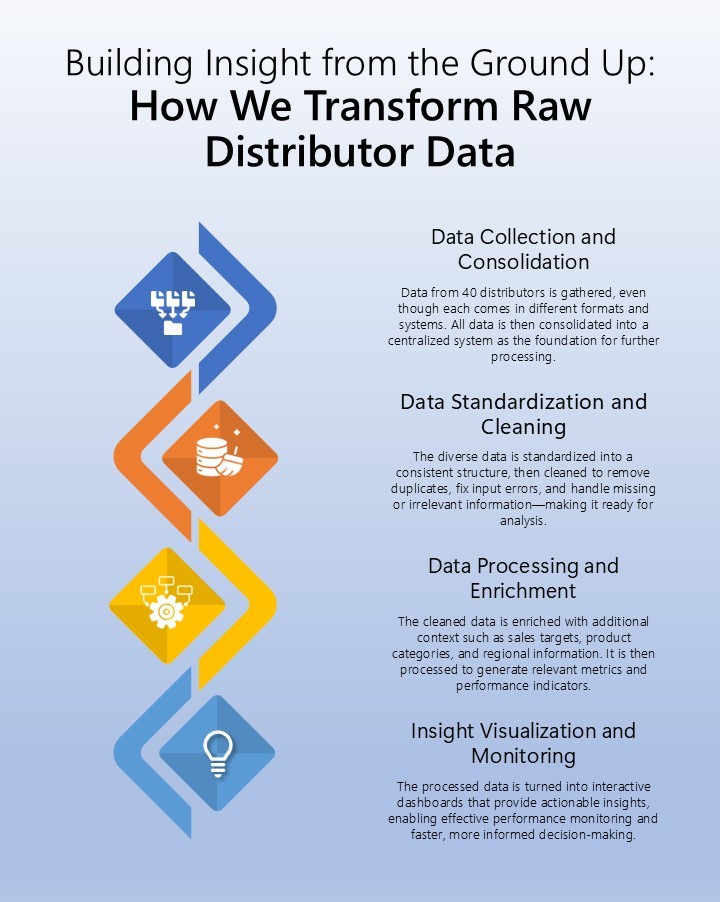Distributor networks are critical to market coverage, but inconsistent data reporting often turns them into a black box. When each partner delivers sales and inventory reports in different formats, frequencies, and levels of detail, manufacturers are left piecing together a fragmented picture—delaying decisions and obscuring performance.
This isn't a matter of poor technology. It's a structural issue rooted in the lack of common data language across the supply chain. And without addressing it, even the best sales strategy risks being misaligned with reality on the ground.
Why Fragmented Data Holds You Back
Imagine trying to assess your product’s performance across eight different regions—only to find each distributor using different SKU codes, naming conventions, and date formats. Some include returns, others don’t. Currency conversions are inconsistent. And by the time everything’s reconciled, the data is weeks old.
This complexity not only drains time and resources—it compromises planning, masks local opportunities, and makes accurate forecasting nearly impossible.
From Patchwork to Platform: A Smarter Approach
Solving this challenge starts with structure. Leaders in this space begin by defining a common data model—a shared understanding of key metrics like sales, stock, and movement. Standardized templates and validation rules follow, ensuring that every incoming dataset fits the model, regardless of who sends it.
But flexibility is just as important as rigor. Distributors vary in digital capability. That’s why a multi-channel data intake strategy—combining APIs, structured spreadsheets, web portals, and even EDI—is essential. It creates room for participation without lowering standards.
Turning Raw Data Into Reliable Insight
Once data is collected in a consistent format, transformation is key. A robust ETL layer harmonizes different naming schemes, units of measurement, and product codes. It aligns data from diverse sources into a single stream that decision-makers can trust—daily, not monthly.
With this foundation, advanced analytics can do their job: comparing regional performance, surfacing anomalies, and identifying patterns across the network. Instead of acting on assumptions, you respond to evidence.

Collaboration Built on Shared Clarity
Standardized data doesn't just benefit headquarters. Distributors themselves gain visibility into how they perform relative to peers, how promotions actually drive sell-through, and where inefficiencies lie. When insights are mutual, conversations shift—from reporting tasks to joint growth strategies.
A Strategic Asset, Not Just a Technical Fix
Distributor data standardization may sound operational, but its impact is anything but. It opens up real-time visibility, accelerates decision-making, and enables more precise planning across your commercial ecosystem.
Once structured, what used to be a reporting headache becomes a source of competitive advantage.
